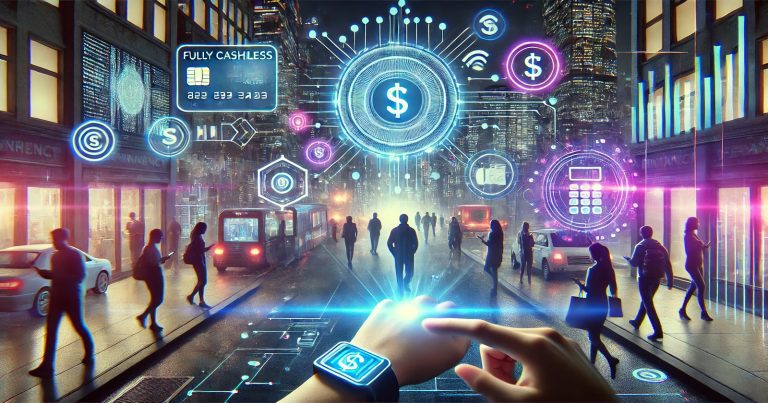Digital transactions are electronic exchanges of money between two parties using digital means of payment. It does away with physical cash requirements, allowing for fund transfers, payment of bills, and purchases of goods and services using online platforms. Digital banking, e-commerce, and financial services transactions are thus vital to any modern economy.
The digital transaction process involves secured communication amongst the banks, merchants, and customers via digital platforms. The increasing popularity of these transactions stems from their ease, speed, and security. Nevertheless, users should remain vigilant to possible digital transaction fraud due to cyber threats. Different governments and financial bodies are always bent on improving the security of digital transactions to render them ever safer and better.
What is a Digital Transaction?
A digital transaction is any financial transaction electronically conducted without physical cash. Various digital transaction methods enable the completion of transactions, including credit card payments, debit card payments, mobile wallet payments, UPI payments, and online banking. These payments are made over secured networks to transfer funds safely from one bank account to another payment method, which nowadays are regarded as synonymous with digital transactions, which did not originally exist. Earlier, every monetary transaction would imply a paper-based mode of certain kinds, checks, or money orders. Whereas today, these digital payments are construed as the fastest, safest, and most convenient mode of sending and receiving money, their acceptance rate has slowly caused a decline in cash payments, thus making economies increasingly cashless.
A digital transaction is not merely restricted to buying and selling; it involves other things like online bill payments, cash transfers, stock trading, and crypto exchanges. Digital transactions enable businesses, persons, and governments to manage their finances effectively. As we look at the future of digital transactions, blockchain technology, artificial intelligence, and biometric authentication hold much promise in ensuring security and efficiency within digital transactions.
How Digital Transactions Work?
Digital transactions are made possible via a server-type interconnected system comprising banks, payment processors, and digital wallets. Such coordination will always be real-time and include verification and authentication to ensure security. Upon digital payment initiation by any party, the system will confirm their identity and availability of sufficient balance before the transaction goes through. The digital transaction process is mentioned below:-
- Initiation by the User: The sender selects their digital transaction option, such as credit card, debit card, or UPI.
- Authentication: The system identifies the user using PIN OTP or biometric scan.
- Bank Authorization: The bank checks the account’s balance, and either approves or declines the transaction.
- Transaction Processing: The payment processor transfers funds from the sender to the receiver.
- Confirmation: The receiver receives the payment, and both parties receive confirmation via SMS, email, or app notification.
This process takes place in seconds, which works to the advantage of digital transactions for business and personal use. Several security measures, such as encryption and fraud detection, are incorporated into digital transactions to eliminate unauthorised access.
Benefits of Digital Transactions
The mushrooming trend of digital transactions has provided several benefits to the household and business levels. Such advantages cover convenience, security, economic growth, and efficiency.
Speed and Convenience
The customer can enter into a digital payment transaction within seconds and engage in online shopping, pay bills, and transfer funds without stepping inside a bank or ATM. Such quick receipts of customer payments will only make satisfied business customers, allowing them more time to invest in other areas.
Increased Security
Encryption, 2-step authentication, and fraud detection methods secure every digital payment channel. Banks and financial institutions, on their part, are still attempting to minimise the incidence of fraud while monitoring every transaction for anything suspicious.
Cost-Effectiveness
Digital payment modes also save on cash handling, which is a chief reason. The cost of storing, transporting, and securing cash is saved. Further, digital customers do not spend time or money travelling to the nearest physical location, be it a bank or ATM.
Transparency and Recordkeeping
Every digital transaction offers an electronic record. This helps users monitor expenditures, keep taxation records, and manage finances efficiently. On the other hand, tax evading would be a problem for those working in shadow economy transactions, hence increasing compliance for the government and companies.
Global Digital Transactions
Enabling cross-border payments allows people to send and receive money internationally, which works for online businesses with a more significant customer base, thus improving global trade and economic growth.
There are some disadvantages, such as digital transaction fraud and cyber threats. Therefore, users must follow necessary precautions, such as enabling multi-factor authentication and monitoring transaction alerts.
Mechanism of Digital Transactions
Digital transactions adopt measures of several layers of security, verification, and finance processing. It constitutes a safe way for the transfer of money between parties. The technology behind these transactions keeps developing; it now employs blockchain and AI for fraud detection and biometric authentication. The main elements of digital transactions are:-
- User verification: Digital transaction verification is the process of identity verification for the transaction using a password, PIN, or biometric identification. This stage ensures that only authorized users make the transactions.
- Payment Gateway is the process by which an institution acts as a mediator in processing a transaction, ensuring security between banks and merchants. Payment gateways would encrypt user data to prevent inappropriate parties from accessing it.
- Bank Authorization: This is where a bank checks for the sender’s balance and approves or denies a transaction, depending on the availability of funds. If the balance is insufficient, the transaction gets declined.
- Settlement Process: The recipient’s money is received after the payment system completes the transaction. In the future, these transaction details will be retained as digital records.
This increased interest in the security of digital transactions keeps them safe from all cyber threats. The latest updates to security measures become regular with many financial institutions and businesses to protect against fraud in digital transactions and unauthorized access.
Types of Digital Transactions
Digital transactions are basically of many types, depending on the type of payment made via the method or the platform used. The following are some of the most widely used digital transaction types.
- Online Shopping Payments: Credit/debit cards, UPI, or the remaining digital wallets are a common way to pay for online goods and services.
- Mobile Wallet Transactions: These may include apps such as Google Pay, PayPal, and Paytm, which enable users to keep their money digitally and make transactions.
- Bill Payments: People use net banking or UPI without using cash to pay electricity, water, or phone bills.
- Transactions in Stock Markets: Investors buy and sell shares through an online brokerage platform.
- Cryptocurrency Transactions: These are the decentralized transactions made possible with blockchain technology using digital currencies like Bitcoin.
These all prove the importance of growing digital transactions within future financial systems. The emergence of digital transaction platforms keeps escalating towards making all transactions faster, safer, and more accessible.
Forms of Digital Payment in India
Digital payment in India has soared as more and more fintech innovations come up with various digital payment methods that help different needs.
| Digital Payment Method | Description |
| Unified Payments Interface (UPI) | Instant bank-to-bank transfers using mobile apps. |
| Mobile Wallets | Digital wallets like Paytm and Google Pay for cashless payments. |
| Internet Banking | Online banking services for fund transfers and bill payments. |
| Credit/Debit Cards | Widely used for online and in-store transactions. |
| QR Code Payments | Scan-and-pay technology for merchants and retail stores. |
| AEPS (Aadhaar-Enabled Payment System) | Uses biometric authentication for transactions. |
These payment methods ensure people can choose a secure and convenient way to complete their digital transactions.
Applications of Digital Transaction
Digital transactions are now utilized in light of how such transactions can be applied across distinct industries. Financial transactions include transactions by businesses, banks, governments, and individuals.
Banking Sector
Digital transactions involve banking transactions, making online banking, mobile banking, or automatic payment operations available to customers so they can do their business on fund transfers, loan payments, and investments without going to a branch.
E-Commerce Industry
The online vendor uses digital payments to order instantly and pay into account. E-commerce websites integrate their other digital transaction systems to provide convenience to their customers.
Government Services
The government encourages Digital transactions for online payments of welfare schemes, tax payments, and even services. All of these increases in transparency and reductions of corruption.
Healthcare Sector
Hospitals and clinics use digital transactions for payments against consumer bills, insurance claims, and medical services. Everything happens faster and requires less paperwork.
Digital transactions are still evolving in different sectors. They will keep improving efficiency and transparency. Digital transactions in the future will bring even more improvement by creating innovative ways of making financial exchanges seamless and secure.
Digital Transaction FAQs
1. What is a digital transaction?
A digital transaction is a transaction in which the payment is made using digital channels, as opposed to cash-based transactions, using electronic payment instruments such as online money transfers, mobile wallet transactions, and online payments.
2. Are digital transactions safe?
Digital transactions rely on encryption, OTP verification, and fraud detection systems to ensure security. To further boost protection, users have to enable two-factor authentication.
3. What are the chief binaries for conducting digital transactions?
The standard digital transaction methods include UPI, mobile wallets, net banking, credit/debit cards, and QR code payments.
4. How does fraud related to digital transactions happen?
FDigital transaction fraud is mainly associated with phishing, hacking, or identity theft. Hence, it is advisable not to communicate personal details or verify transaction alerts.
5. What is the digital future for transactions?
The future of digital transactions has AI-enabled fraud detection, blockchain security, and seamless cross-border payments.


